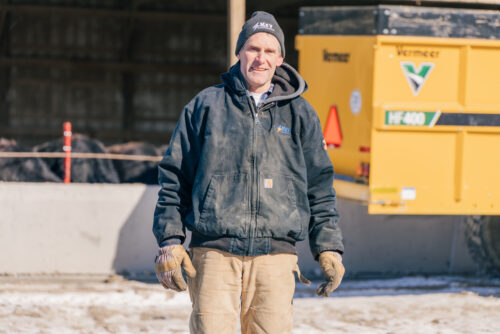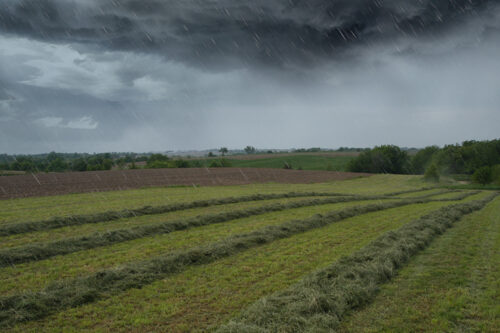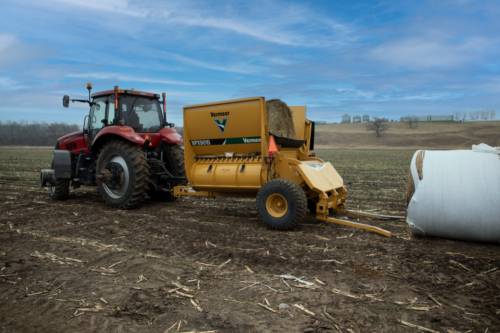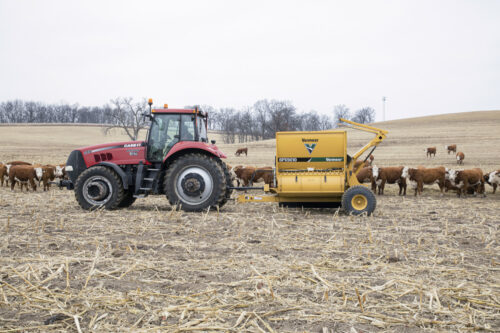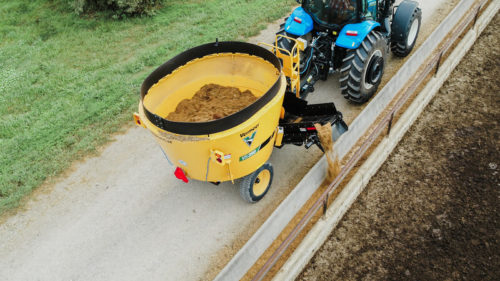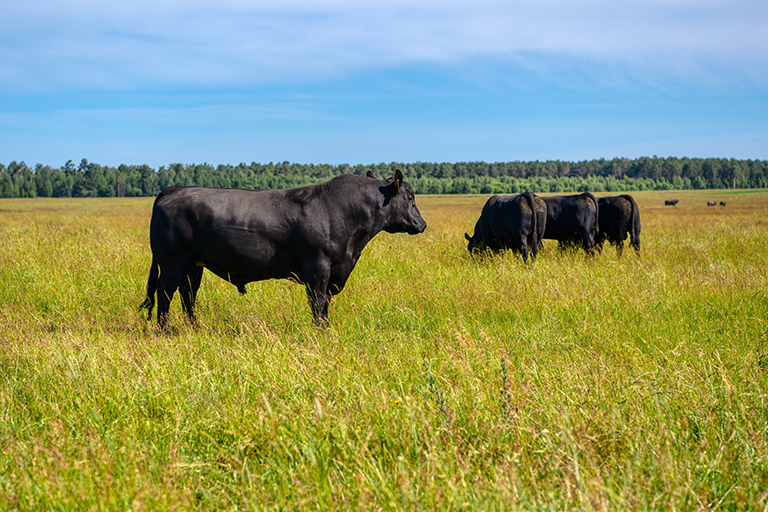
Calf, Cow, Heifer and Bull Nutrition: Feeding Your Herd
March 2023
All cattle require the right nutrients to meet their maintenance and growth needs. However, cattle serve different purposes — and have different nutritional needs based on the goals producers have for them. For seedstock cattle, producers focus on creating nutritional programs that help them reproduce and raise healthy calves. Even so, programs will differ based on sex and where the animal is in the reproductive cycle.
For instance, a bull’s nutritional needs greatly differ depending on whether the animal is out covering cows, is being collected for artificial insemination (AI) purposes or is in a maintenance phase. Similarly, heifers and cows don’t have the same nutritional needs as a bull — and a young heifer will have different nutritional needs than a bred heifer or a lactating cow.
Understanding those variations can help you refine every segment of your herd’s nutrition program, which can in turn help you minimize feed waste and maximize cattle performance.
Understanding body condition scores on breeding cattle
Body condition scores can help you assess nutritional needs in your herd. This scoring system is a visual assessment of cattle, ranking them one through nine based on their weight. One indicates an animal is extremely thin and could point to an illness. Cattle reaching a nine on the scale are overweight, causing severe production challenges or even risking death.
According to Chris Cassady, a technical sales field manager at BioZyme® who earned his doctorate in animal science at the University of Illinois, producers should strive for a score right in the middle of the scale, at a five or six. The nine-point scale is the same for both bulls and cows, but Cassady noted that muscle on bulls could skew the assessment.
How do body condition scores help producers refine their nutrition program? According to Cassady, the score can help indicate if cattle are getting enough nutrients. He tells producers to think of their needs as buckets.
“The first bucket that gets filled is maintenance. The second one is growth, if they’re a young animal that’s growing. If not, then it goes to lactation for a lactating cow. Then reproduction is the next kind of bucket down the line,” he said. “If all those buckets are filled, then the last one is like an energy reserve. If that bucket’s being filled and that animal is staying in the proper condition, that means that all the other buckets are satisfied.”
Cattle also have the unique ability to store nutrients in the form of body condition and can mobilize them in times of need. Thin cows that lack body condition may have challenges with breeding, health, and other critical activities.
Calf nutrition
For the first six to nine months of their life, calves will rely primarily on their mothers for milk. As they continue to develop, these animals will begin to eat a more varied diet including forage materials and other feedstuffs. The process is gradual, giving calves time to adjust to their changing diets.
From there, calves will be selected for backgrounding or seedstock, which will determine their nutritional needs for the future. Seedstock cattle nutrition is focused on preparing for reproduction. Needs vary depending on the sex of the animal and their growth needs.
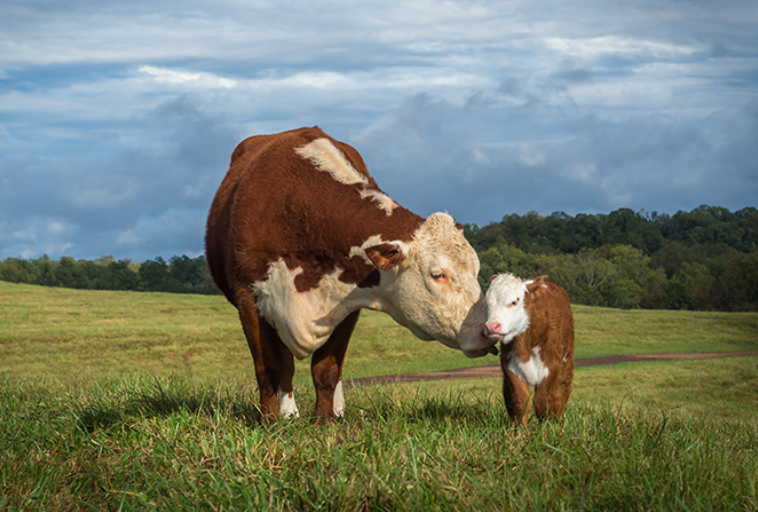
Heifer and cow nutrition
Before a heifer is bred, her nutritional needs are quite different than her cow counterparts, which is why a lot of producers manage and feed them separately. In this stage, heifers are focused on growing. Those nutritional needs have to be met. The goal is to get her to an appropriate size and weight to set her up for success for reproduction, sustaining a pregnancy and nourishing the calf when it is born.
Gestating cows have varying nutritional needs depending on how far along they are in their pregnancy — much like how bull nutrition depends on whether the animal is breeding or not. According to Cassady, their nutritional needs are lowest in the middle of her gestation period. However, that doesn’t mean producers can abandon her nutritional program.
“This is kind of when cows are at their lowest requirements, but as they enter that final trimester of gestation, that is when a lot of that changes and there’s big, rapid growth,” Cassady said. “If you think about a 90-lb (41-kg) calf, it’s gaining a pound (.45 kg) a day in utero for the last 60 days. There needs to be significant or sufficient nutrition to target that growth and prepare that cow for colostrum production. Along with preparing her for the stress and building up her energy reserves for the tough parturition process.”
As lactation begins, these animals will need even more energy to feed their calves. A cow will be most in need of protein and nutrients three months after she calves in to produce enough milk and energy for their calf to meet growth goals.
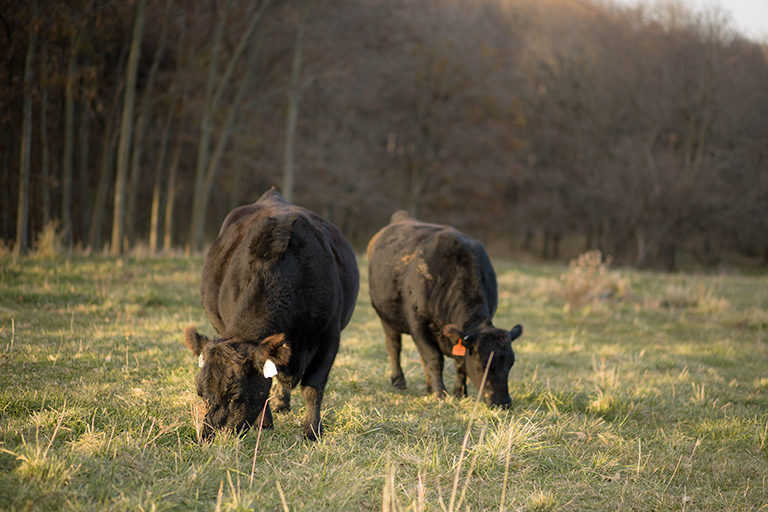
Bull nutrition
When it comes to bull nutrition, the first challenge is to develop a nutrition program to prepare the animal for its first breeding season. Then, their needs will vary throughout their lifetime depending on if they are covering cows or in the offseason. Obviously, nutritional needs are much higher during breeding season when bulls are expending much of their energy. Producers will adjust available feed to help meet those needs. Even so, bulls can lose some of their body condition score during breeding season.
“If his focus is on breeding cows and not necessarily stopping and grazing, that’s going to take away from his body condition scores. Typically, a lot of those bulls will lose quite a bit of weight during the breeding season,” Cassady said. “The offseason is a good opportunity to bring that bull back into the proper shape. Most of our breeding seasons are only a couple months, so we have the remainder of the year to of bring him back slowly.”
Hay strategy, vertical mixers and herd nutrition
From bull nutrition to managing your cows’ body condition scores, your performance goals rely on your feeding strategy. While some factors present major challenges — like tough weather years that impact hay availability and quality — producers can manage other factors like how they store and feed the hay.
Cassady recommends producers test their feed ingredients to understand exactly what their herd is eating and whether supplements are in order. Each round bale can be drastically different from the next in terms of density, nutritional content and overall quality.
“Test your feed ingredients because you would be surprised of the variability that you’ll see in those. Maybe you’re short on energy or maybe your hay quality wasn’t as good as you thought it was, and you have to supplement energy or protein,” Cassady said. “Make sure your herd has a viable mineral and vitamin program year-round. It seems like it’s only a small part of their daily diet, but they’re so important in terms of an immune function, reproductive efficiency and health mitigations.”
In addition to feed testing, Cassady recommends producers consult a cattle nutritionist. Many are local, bringing important knowledge about feed availability along with their nutrition expertise.
But no matter your nutrition plan, a vertical mixer, like those produced by Vermeer, can help you control the nutrients you give to your herd. The equipment offers producers a way to maximize feed performance by allowing them to mix different quality forages, as well as supplements, as needed. Cassady encourages producers to keep a vitamin and mineral routine for cattle throughout the year, which a vertical mixer can help with.
A vertical mixer helps minimize feed waste by delivering uniform feed for cattle, as well as helping you flex your rations based on which groups you are feeding.
“Vertical mixers offer homogenization consistency, kind of like a guarantee that what those cows are provided they’re going to consume,” said Cassady. “It can help manage waste and help make the hay that you buy last longer. There are nutritional benefits and then there are efficiency benefits as well.”
Interested in how a Vermeer vertical mixer could help support herd nutrition on your operation? Your local Vermeer dealer can help you explore options.
—
Information noted above was gathered from a third party who was advised his/her experience might be featured in marketing materials. This article contains third-party observations, advice or experiences that do not necessarily reflect the opinions of Vermeer Corporation, its affiliates or its dealers. Individual results may vary based on care and operation of machine and crop and field conditions, which may adversely affect performance.
Vermeer Corporation reserves the right to make changes in engineering, design and specifications; add improvements; or discontinue manufacturing at any time without notice or obligation.
Equipment shown is for illustrative purposes only and may display optional accessories or components specific to their global region.
Please contact your local Vermeer dealer for more information on machine specifications. Vermeer and the Vermeer logo are trademarks of Vermeer Manufacturing Company in the U.S. and/or other countries. © 2023 Vermeer Corporation. All Rights Reserved. BioZyme is a trademark of BioZyme, Inc.


